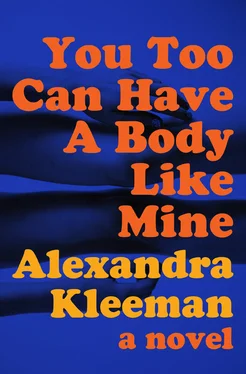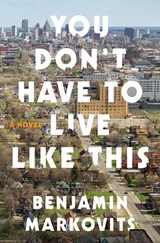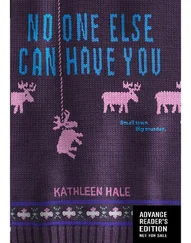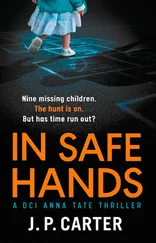B and I watched our neighbors shuffle in sheets toward the family sedan. The husband opened the passenger’s-side door for the wife, then walked all the way around the car to open the driver’s-side rear for the little girl, tiny under her white covering. Then he walked back up the front steps and into the house. We watched the door for what must have been a long time. Birds fought in the dark interior of the juniper bushes over things that we did not comprehend. The smaller body fidgeted in the backseat of the sedan. The father returned, carrying an aerosol can that turned out to be spray paint, cherry red. He stood in front of the garage door and in large sagging block letters he spelled out:
HE WHO SITS NEXT TO ME,
MAY WE EAT AS ONE
The ghost man looked down at his can of spray paint like someone wondering what he had just done and whether he had done it all correctly. Then he set it down on the driveway and got into the car. There was the sound of the engine starting up, the tires grinding against stray rocks, and then they were gone. They had left the front door open.
B and I stared at the emptied house for a while, then she turned and climbed back inside, stepping over the puddles of Popsicle juice and dead ants. I squinted at their house, a drop of sweat settling onto my eyelashes and making me blink. Through the front windows I could see corners of their furniture, covered over in still more swaths of white fabric. It looked like a room about to be professionally fumigated or painted, some mundane sort of transformation. I sat there for maybe a half hour watching the empty house for whatever might happen next. But nothing happened next. When the ants started crawling over me, I brushed my body off and went back in through the window. I was still hungry when I got back to my room. I stared at the knot of hair for a while before I turned on the smaller TV in my bedroom, the one I watched when I didn’t want to watch near B.
The TV was showing another commercial for Kandy Kakes. This commercial was one of the newer series of ads that mixed animated and live-action components. In this new series, Kandy Kat would often successfully chase down or otherwise achieve contact with the snack cakes, but the cakes were pictured as live-action, three-dimensional objects while the cat was always a flat cartoon. The gag each time was that no matter how hard he tried, Kandy Kat could never put a Kandy Kake down his throat: the two types of matter were fundamentally incompatible. This went along with an advertising campaign centered around the point that Kandy Kakes were made of Real Stuff. Maybe not natural stuff, but definitely genuine three-dimensional material from our physical universe that was similar to us in ways that it might not be to bodies from a cartoon world.
In this commercial, Kandy Kat walks wobbily through a cartoon landscape full of dancing trees. The trees are shaking their middles and singing the Kandy Kakes jingle, as little birds play bells and maracas in their branches. You can see every rib on Kandy Kat’s brownish body as he wobble-skips through the woods, having what appears to be a pleasant day. He looks fairly carefree, oblivious to his hunger and to the words being chanted all around him by the living trees — when suddenly he happens upon a plate of Kandy Kakes sitting in a clearing in the middle of the forest, three-dimensional and super-real among the painted foliage, glowing with a sparkly light that is not real, not cartoon, but something in between. In rapid sequence, he spasms through shock, surprise, delight, disbelief, delight again, and then crippling hunger. His ribs throb. And when he reaches out for the platter, you actually see his emaciation in motion: the skin sags a little off the forearm, the bones and tendons of the arm show starkly with a little drop shadow under them to heighten the effect. His eyes grow larger and whiter in their huge cartoon sockets. At this moment, I want so badly for him to just take one of those revolting Kakes and shove it all the way into his belly, anything, anything to anchor his body a little bit.
But when his hand finally reaches the plate and grabs for a Kandy Kake, none of the Kakes will budge. It’s hard to describe. It looks like Kandy Kat’s hand is touching them through the glow, but they aren’t affected at all. It’s not like they’re a photo, but more like they’re impossibly heavy so he’ll need something else to move them. So Kandy Kat runs out of the frame and gets a comically large fork and he aims it at the plate and stabs down, but the fork seems to just pass through them as though they’re made of nothing, and Kandy Kat stabs more slowly and then picks the fork up and looks at it, confused. Then he runs back out of the frame and returns with an ax, which just does the same thing — nothing — no matter how many times he hacks away at the plate. Meanwhile the forest is getting pretty torn up. And when he runs back out of the frame and comes back he’s got tons of dynamite, which he sets up all around the Kakes and detonates in a huge explosion that turns all the trees and birds black, with little white eyes blinking in stunned disbelief. The platter of Kakes glows more handsomely than ever against this scorched background, and finally Kandy Kat just yanks his mouth open with his two hands, painfully wide with a cracking sound, and jumps mouth-first onto the plate and the Kakes, trapping their glow inside his mouth as he lies on the forest floor.
His mouth is kind of suctioned to the ground now, and he struggles, very carefully, to close it, drawing the lips together, biting into the soil to prevent any precious morsel from being left behind, and he closes slowly on a mouthful of dirt and plate and Kakes. He stands up, shaking, his mouth full. There are big bite marks in the cartoon soil where his teeth have gouged away at the earth. And — tentatively — he bites down.
It doesn’t even make a sound.
Confusion shows on his face, and he bites again, and again, more rapidly: nothing. Then, stretching his throat out to the appropriate width, he tries to swallow the plate whole, again and again, nothing. Finally, disheartened, he spits out the plate, the Kakes perfect and intact, still with that weird magical glow on everything, though now the glow has something smug about it. Kandy Kat looks toward the screen and his eyes have a new wetness to them. KANDY KAKES, the screen reads. REAL STUFF. REAL GOOD.
I looked down at my body as if for the first time. I felt fear wadding up the swallowing part of my throat. I reached down and put my hand on my stomach. I thought about the little swaddled girl in the back of the four-door sedan, so limp and still that she could have been a heap of dirty laundry. I wondered what happened to their dog. There was a bruise on my left thigh that I’d never seen before, and I was hungrier than I’d ever been. On the television screen, the evening news returned from commercial. There had been breakthroughs in the preliminary testing of a new anticancer drug designed to heighten the immune system’s sensitivity to familiar somatic cells growing at abnormal rates. Half of the animals used in testing showed greatly reduced growth for tumors and other unusual structures, as well as a reduction in the number of new abnormalities. The other half died.

ON A TELEVISION TALK SHOW,a man named Michael spoke, his gaze drifting over and over to something beyond the camera and snapping back into position only at the prompting of the host. His scalp had been shaved, poorly. He was seated in a purple armchair that looked ugly and at the same time expensive, wearing a nice gray suit that he kept grabbing at, trying to pull it tighter across his body. He was here to explain the series of events that had led to his arrest, and he had prepared a video to help him talk. Over his head the screen faded to black and then there were scenes of veal farming: shaky handheld shots showing the crated calves gridding endlessly through long dark rooms. They ate in lines, slept in lines, fastened to their positions by lengths of chain. Stillness kept their flesh tender, prevented effort from knotting the fibers of their meat into muscle. Their low-iron diet ensured that color would not stick to the inside of the bodies. Lack of light kept pigment from ripening in the flesh. In the darkness of the warehouse farm, the calves grew whiter and whiter and softer, and the thought of this darkness wrapped around so many swelling lives grew a parental protectiveness in Michael, alongside an aimless hunger.
Читать дальше





![Ally Carter - [Gallagher Girls 01] I'd Tell You I Love You But Then I'd Have to Kill You](/books/262179/ally-carter-gallagher-girls-01-i-d-tell-you-i-lo-thumb.webp)







